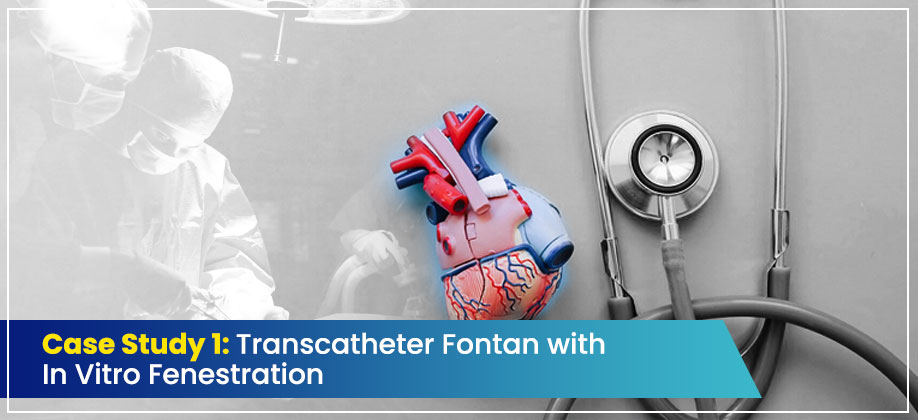This case study details the successful transcatheter Fontan procedure performed on an 11-year-old girl with Tricuspid Atresia IIB and associated pulmonary arteriovenous malformations (PAVM).
Case Summary
An 11-year-old girl, weighing 26.5 kg, presented with a history of Tricuspid Atresia IIB. At 1 year of age, she had undergone bilateral Bidirectional Glenn (BD Glenn) shunt with Left Pulmonary Artery (LPA) plasty. Prior to the current intervention, cardiac catheterization revealed normal Pulmonary Artery (PA) pressure and normal Pulmonary Vascular Resistance Index (PVRI), indicating suitability for a Fontan procedure. Notably, she also had multiple pulmonary arteriovenous malformations (PAVM) in her right lung. The procedure was performed at Narayana Health Hospital, Howrah.
Diagnosis
The primary diagnosis was Tricuspid Atresia IIB, a congenital heart defect where the tricuspid valve is absent or abnormally developed, preventing blood flow from the right atrium to the right ventricle. The patient also presented with multiple Pulmonary Arteriovenous Malformations (PAVM) in the right lung, which are abnormal connections between arteries and veins in the lungs, bypassing the capillary bed and leading to unoxygenated blood entering the systemic circulation.
Line of Treatment
The chosen line of treatment was a transcatheter Fontan procedure. This minimally invasive approach involved the deployment of a single covered stent, specifically a Xephyr CS measuring 69 mm in length. The stent was approached from the left Glenn shunt, and an in vitro fenestration was created, suggesting a controlled opening within the stent for specific hemodynamic purposes. This procedure aimed to complete the Fontan circulation, directing systemic venous return directly to the pulmonary arteries, bypassing the right ventricle.
Results
The immediate post-procedure outcomes were highly favorable. The patient achieved same-day extubation with only minimum inotropic support, indicating stable cardiac function post-intervention. There was no evidence of effusion, a common complication after cardiac procedures. She was discharged on day 6 post-procedure, maintaining an oxygen saturation (SpO2) of 92%. Medications prescribed upon discharge included ecosprin and warfarin for anticoagulation.
The successful outcome highlights the expertise of the medical team, including Dr. Amitabha Chattopadhyay, Dr. Rishika Mehta, and Dr. Anwesha Mukherjee.


